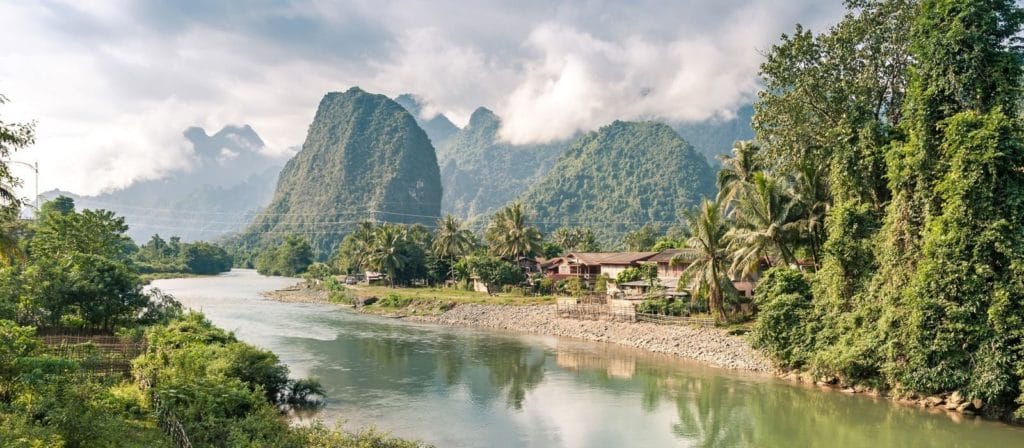Houay Xai, sandwiched between the Mekong and a range of hills, is for many visitors their first introduction to Laos, lying across the river from Thailand. It was long an important crossroads for Chinese merchants from Yunnan, who, driving caravans of pack-ponies laden with tea, silk and opium, would pass through Houayxai on their way south to Chiang Mai, and again on the return north with their loads of gold, silver and ivory. Today, Chinese goods are still much in evidence, but exotic cargoes of silks and opium have been replaced by dirt-cheap hand tools and brittle plastic wares that are floated down the Mekong by the barge-load.

Houay Xai’s only real sight is Wat Chom Khao Manilat, situated atop a hill, and reached by stairs across the road from the ferry landing. The gaudy modern sim is barely worth doing a lap around, but the adjacent, tall, Shan-style building, which was originally a sim but is now being used as a classroom for novice monks, is made of picturesquely weathered teak. Behind the modern sim is a collection of heuan pha, literally “cloth houses”, built to store belongings of the dead. Originally, these homes for the spirits were fashioned from cloth or mulberry paper, but nowadays many are constructed from plywood – a practice unique to parts of northern Laos and northern Thailand. The top of the stairway leading up to the monastery from the main road is a perfect place to watch the sun set.
There’s a traditional Laos herbal sauna run by the Red Cross, located just past the wooden bridge as you go north up the main road. Most tourists hurry through Houayxai, either rushing through to Thailand at the end of their visas or entering from Chiang Khong and immediately heading downriver by slow boat. Despite being a border town, it’s not completely devoid of charm, though the main reason to stop here now is to take part in the acclaimed Gibbon Experience.






